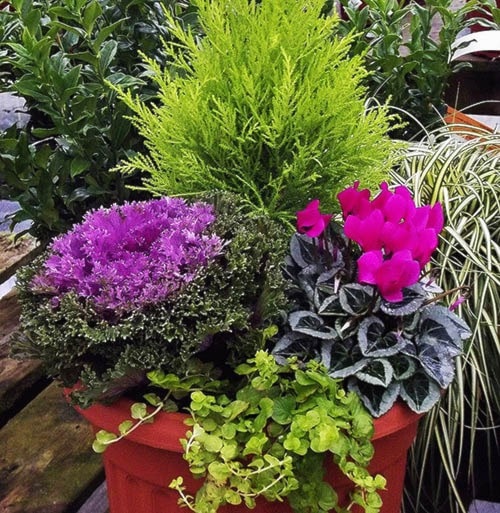I hate to be the first person to say the ‘W’ word out loud, but even the most short-sighted among us would have noticed the biting cold winds, snow-dusted mountains and tell-tale Christmas decorations popping up in the mall.
That said, we have really enjoyed an extended summer this year and it looks like we may just bypass autumn altogether and go straight into winter.
Which means that you may not have a lot of time to get things organized in your garden.
With that in mind, here is your helpful winter checklist:
• Cut that shaggy lawn –if your lawn is looking a bit long, you probably want to give it one last cut before winter. Grass that is left too tall and falls over in the rain is quite prone to fungal diseases. You can also add some lime now to raise the soil pH and discourage the growth of moss.
• Winterize tender plants – this sneaky winter weather is particularly hard on marginally hardy plants, such as windmill palms (trachycarpus fortunei), hardy bananas (musa ‘basjoo’) and gunnera. So now is the time to mulch those root systems, cover those tender crowns and slip-on those banana sleeves. Any delay may result in permanent damage from potential cold snaps.
• Rake and compost leaves – remember to rake and compost those falling leaves so that they can be recycled as a nutrient-rich mulch or a soil amendment for next year. The exceptions here would be walnut (or any juglans) leaves as they release a chemical that deters plant growth and any diseased foliage from prunus trees (fruiting or flowering cherries and plums) or dogwoods. The latter should be sent to the municipal green waste pile where they are hot-compost sterilized and used for topsoil blends.
• Do last-minute spring bulb shopping – it’s not too late to plant spring bulbs and many garden centres still have a good selection of tulips and daffodils, many of which are on sale. Don’t forget those often overlooked minor bulbs, as alliums (flowering onions), hyacinths, species crocus, grape hyacinths (muscari), fritillaria and snowdrops (galanthus) add a lot of early and late season interest.
• Rejuvenate fall planters – some elements of your autumn planters such as gloriosa daisies (rudbeckia hirta) and herbaceous grasses are starting to look worse for wear and should be replaced. You can fill those voids with winter pansies or violas, ornamental kale (which lasts until Christmas), berried wintergreen, heuchera, even lingonberry. You should also consider adding some miniature bulbs for spring colour – a few good choices include narcissus ‘tete a tete’, muscari armeniacum (grape hyacinth) and botanical tulips.
• Clean mason bees – if you put out a mason bee lodge this past spring, then it’s time to open it up and clean next year’s cocoons. This is an important maintenance concern as residual mites can seriously weaken these native bees and parasitized cocoons that are not discarded will only increase local wasp predators.
You should also take the opportunity to clean and sterilize your now empty nesting trays using warm water and a mild bleach solution.
• Store hoses – storing your hose after it has frozen up can be a difficult process (it’s usually impossible to unscrew) and it almost always leads to watery mess in the garage. It’s best to drain and store it now and do the same winterizing for the outdoor taps.
Mike Lascelle is a local nursery manager and gardening author (hebe_acer@hotmail.com).
